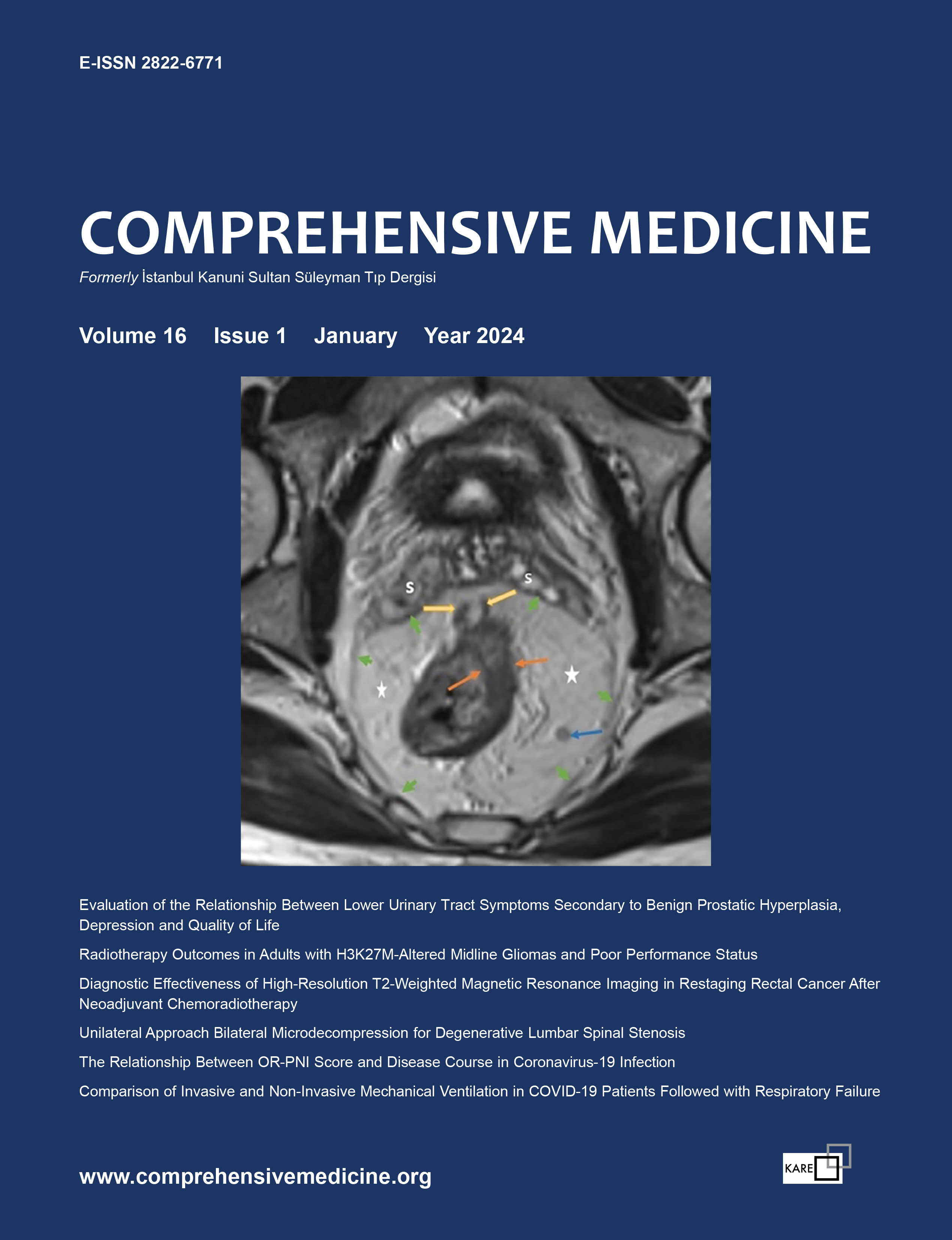






The Prevalence of Sacroiliac Joint Dysfunction Among Medical Students and Evaluation of Relevant Clinic Parameters: A Cross-Sectional Study
Ahmet Kıvanç Menekşeoğlu, Tuğba ŞahbazHealth Sciences University Kanuni Sultan Süleyman Training and Research Hospital, Department of Physical Medicine and Rehabilitation, Istanbul, TurkeyINTRODUCTION: Although sacroiliac joint (SJ) dysfunction (SJD) causes low back pain, studies determining its prevalence and characteristics in the healthy population are limited. The aim of this study is to evaluate the prevalence of SJD and associated clinical parameters in medical faculty students.
METHODS: 230 participants were included in the study. Participants were evaluated with specific tests for SJD. The low back pain of the participants was evaluated with visual analog scale, presence of hypermobility with Beighton criteria, and disabilities due to low back pain with Oswestry low back pain disability index.
RESULTS: The average age of 230 people participating in the study was found to be 21.2 ± 2.1 (minimum = 18, maximum = 26). 42.6% (n=98) of the participants were female, 57.4% (n=132) were male, and the mean body mass index was calculated as 22.6 ± 3.2. SJD was detected in 17% (n=39) of the participants by physical examination. 33.3% (n=13) of those with SJD were female and 66.7% (n=26) were male. There was no significant difference among those with and without SJD with respect to age (p=0.100), body mass index (p=0.483), gender (p=0.199), aerobic (p=0.192), anaerobic exercise (p=0.054) and smoking (p=0.400) among those with and without SJD, there was no significant difference. While 53.8% (n=21) of 39 people with SJD stated that they had low back pain, this rate was found to be 18.8% (n=36) in 191 people without sacroiliac joint dysfunction. A statistically significant increase was found in the pain values assessed by visual analog scale and the Oswestry low back pain disability questionnaire values in the participants with SJD (p<0.001).
DISCUSSION AND CONCLUSION: It is recommended to use physical examination methods in the diagnosis of SJD, which is a common cause of low back pain. In addition, it will be useful to evaluate factors such as leg length difference and hypermobility that may take place in the etiology.
Tıp Fakültesi Öğrencileri Arasında Sakroiliyak Eklem Disfonksiyonu Sıklığının ve İlişkili Klinik Parametrelerin Değerlendirilmesi: Kesitsel Araştırma
Ahmet Kıvanç Menekşeoğlu, Tuğba ŞahbazSağlık Bilimleri Üniversitesi Kanuni Sultan Süleyman Eğitim ve Araştırma Hastanesi, Fiziksel Tıp ve Rehabilitasyon Kliniği, İstanbul, TürkiyeGİRİŞ ve AMAÇ: Sakroiliyak eklem (SİE) disfonksiyonu (SİED) bel ağrısına neden olsa da sağlıklı popülasyondaki prevalansını ve özelliklerini belirleyen çalışmalar sınırlıdır. Bu çalışmanın amacı tıp fakültesi öğrencilerinde SİED’nin prevalansını ve ilişkili klinik parametreleri değerlendirmektir.
YÖNTEM ve GEREÇLER: Çalışmaya 230 katılımcı dahil edildi. Katılımcılar SİED’ye yönelik testlerle değerlendirildi. Katılımcıların bel ağrısı vizüel analog skala ile hipermobilite varlığı Beighton kriterleri ile bel ağrısına bağlı engellilikleri ise Oswestry bel ağrısı engellilik indeksi ile değerlendirildi.
BULGULAR: Çalışmaya katılan 230 kişinin yaş ortalaması 21,2 ± 2,1 (minimum = 18, maksimum = 26) olarak bulundu. Katılımcıların %42,6'sı (n = 98) kadın, %57,4'ü (n = 132) erkekti ve ortalama vücut kitle indeksi 22,6 ± 3,2 olarak hesaplandı. Katılımcıların % 17'sinde (n = 39) fizik muayene ile SİED tespit edildi. SİED olanların %33,3'ü (n = 13) kadın, %66,7'si (n = 26) erkekti. SİED olan ve olmayanlar arasında yaş (p = 0,100), vücut kitle indeksi (p = 0,483), cinsiyet (p = 0,199), aerobik (p = 0,192), anerobik egzersiz (p = 0,054) ve sigara kullanımı (p = 0,400) açısından anlamlı bir fark yoktu. SİED saptanan 39 kişiden %53,8'i (n = 21) bel ağrısı olduğunu belirtirken, SİED olmayan 191 kişide bu oran %18,8 (n = 36) olarak bulundu. SİED saptananlarda VAS ve Oswestry bel ağrısı özürlülük anketi değerlerinde değerlerinde istatistiksel olarak yükseklik saptandı (p < 0,001).
TARTIŞMA ve SONUÇ: Bel ağrısının yaygın bir nedeni olan SİED tanısında fizik muayene yöntemlerinin kullanılması önerilmektedir. Ayrıca etiyolojide yer alabilecek bacak uzunluk farkı ve hipermobilite gibi faktörleri değerlendirmek faydalı olacaktır.
Corresponding Author: Ahmet Kıvanç Menekşeoğlu, Türkiye
Manuscript Language: Turkish








